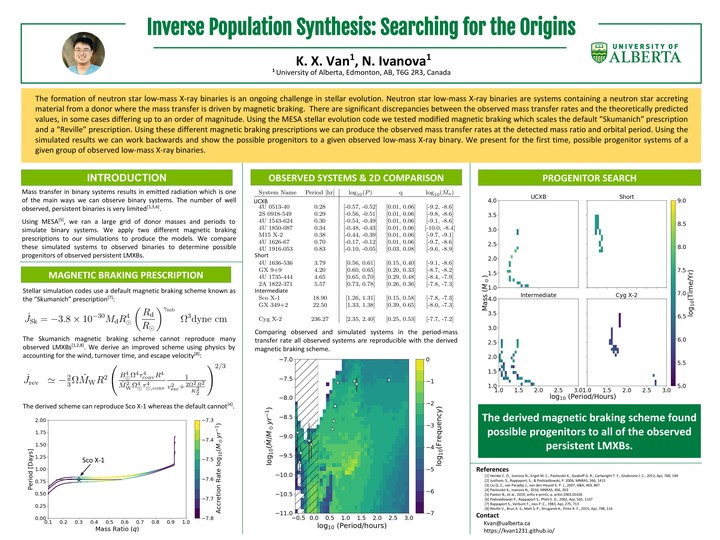Inverse Population Synthesis Searching for The Origins

Abstract
The formation of neutron star low-mass X-ray binaries is an ongoing challenge in stellar evolution. Neutron star low-mass X-ray binaries are systems contain a neutron star accreting material from a donor where the mass transfer is driven by magnetic braking. There are significant discrepancies between the observed mass transfer rates and the theoretically predicted values, in some cases differing by up to an order of magnitude. Using the MESA stellar evolution code we tested modified magnetic braking which scales the default Skumanich prescription and a Reville prescription. Using these different magnetic braking prescriptions we can produce the observed mass transfer rates at the detected mass ratio and orbital period. Using the simulated results we can work backwards and show the possible progenitors to a given observed low-mass X-ray binary. We show the possible progenitor systems of a given group of low-mass X-ray binaries for different magnetic braking prescriptions and analyze how each prescription effects which progenitors successfully reproduce observations.